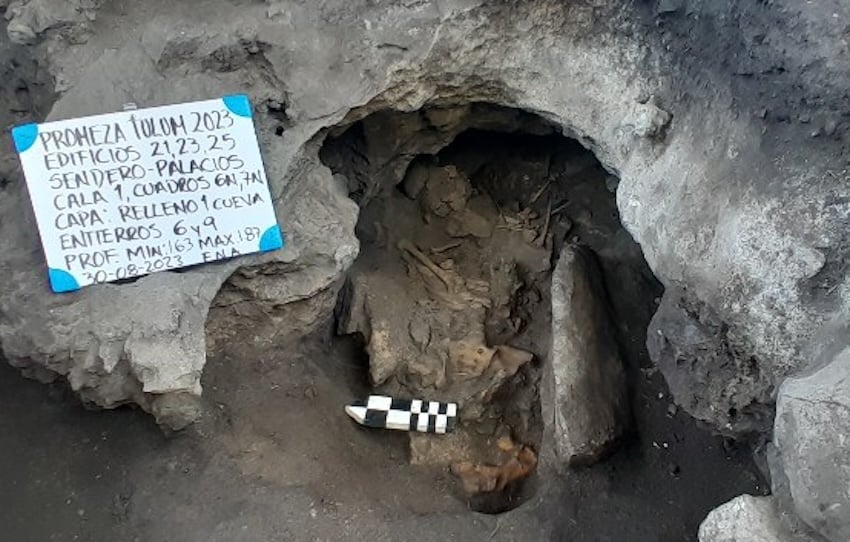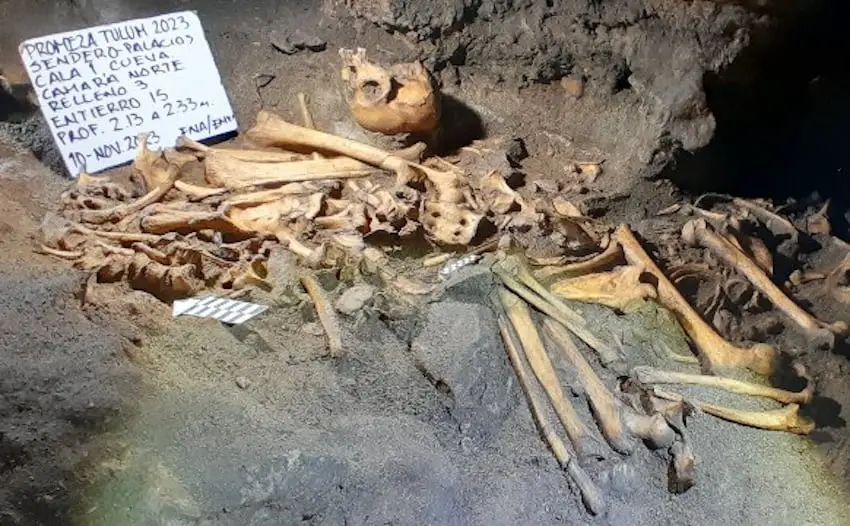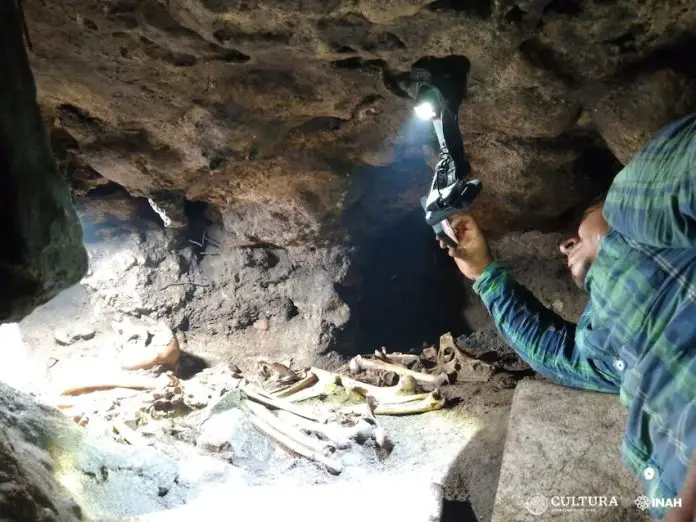Researchers from the National Institute of Anthropology and History (INAH) have announced the discovery of ancient human remains inside a cave inside the ancient Maya city of Tulum, Quintana Roo.
The findings a the world-famous archaeological site were made while clearing the area to create a new path between buildings 21 (Temple of the Columns) and 25 (Temple of Halach Uinic).

According to the archaeologists, the cave entrance was blocked by a large rock placed on top of human bones.
“Upon removing the rock that blocked the entrance to the cave, we saw that it was splitting the ossified remains of an individual, leaving the lower part of his body on the outside and the upper part inside [the cave],” said the coordinator of the archaeological research project, José Antonio Reyes Solís.
According to Reyes, the cave has at least two small chambers to the north and south. Each chamber is approximately 3 meters long, 2 meters wide, and 50 centimeters high. He added that the front of the cave is also decorated by a sea snail, covered in stucco, likely left by the ancient Maya people who inhabited the area.
Researchers have discovered eight adult burials inside the cave’s chambers, all in good condition thanks to the favorable cave environment. These remains are currently being studied at INAH’s Quintana Roo lab.

Animal remains were also found in the cave, including the bones of domestic dogs, rodents, opossums, turtles, iguanas, tiger sharks, eagle rays, crabs, snails among others.
Pottery fragments, dating from the Maya Post-classical period (between 1220 and 1550 A.D.) have also been found inside.
Reyes has said that excavation work undertaken in the cave has posed significant challenges for the team. The confined space, lack of lighting, high temperature and humidity, and presence of insects have complicated documenting the archaeological elements and their surroundings.
However, he said that new technologies, such as laser scanners and high-resolution photography, have facilitated the exploration of the cave and the artifacts within it.
With the help of these technologies, researchers generate 3D models with detail and precision, allowing them to continue the analysis and processing of field data from a computer and give the public a virtual tour of the cave’s interior.
Field work will continue at the site for the remainder of the year.
Mexico News Daily
